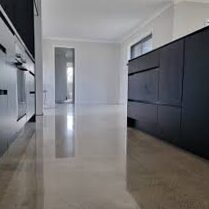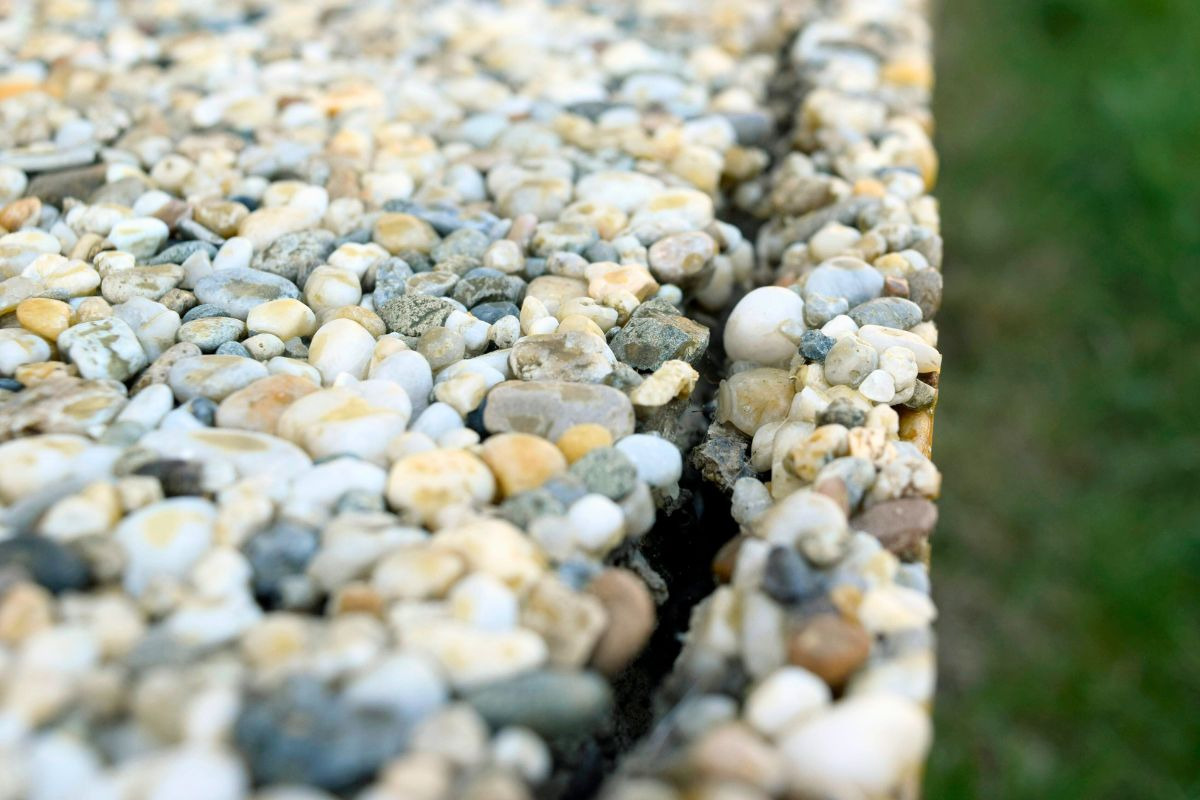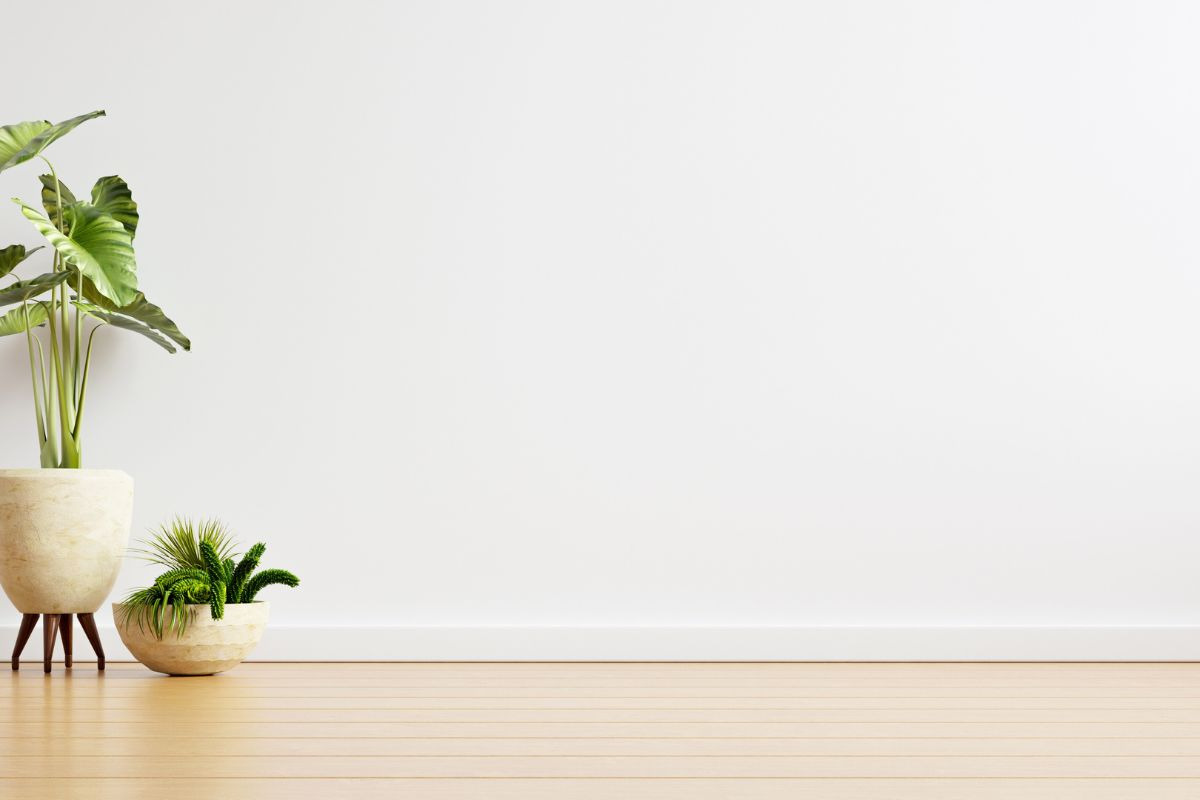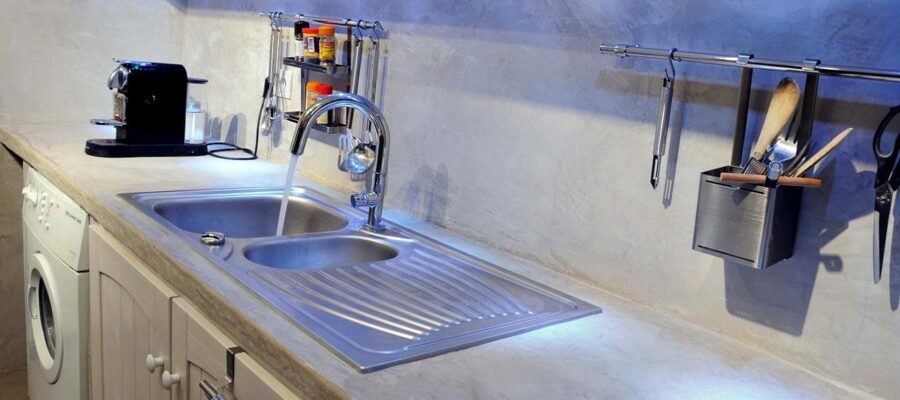The choice of a floor or wall covering implies taking into account several aspects, including the environmental impact. The waxed concrete, an increasingly popular material due to its modern aesthetics, raises questions as to its effects on the environment. In this article, we will in depth the impact of waxed concrete, will compare it in detail with that of other coatings such as tiles, parquet or painting, and will explore viable ecological alternatives.
In -depth analysis of the environmental impact of waxed concrete
Composition et fabrication
Conventional waxed concrete is made up of cement, sand, gravel, chemical adjuvants and colorful pigments. Its manufacture includes several steps:

- Cement production, main component, via the cooking of limestone and clay at very high temperature (1400 ° C). This process consumes a lot of energy and emits CO2.
- Extraction of aggregates such as sand and gravel, affecting natural environments.
- Mixing with water and adjuvants to obtain the concrete paste, then application and smoothing by hand or mechanically.
- Manual or mechanized sanding once dry to obtain the characteristic political appearance.
At each stage, energy consumption and polluting releases are generated.
Use and end of life
When using conventional waxed concrete, few additional impacts are observed outside a possible release of volatile organic compounds of surface treatment products. At the end of life, however, the non -recyclable nature of conventional waxed concrete poses a problem. It is most often crushed and then used as embankment, not allowing to complete the loop. Its demolition and the transport it involves also have a significant impact.
Detailed comparison of the impact of conventional waxed concrete and the main alternatives
In order to better assess the impact of waxed concrete, let’s analyze it in detail and compare it to 3 frequently used alternatives: tiles, parquet and ecological painting.
Tiling
The tiles are made via the cooking of clays, kaolins and feldspaths between 1000 ° C and 1200 ° C. Its impact lies mainly in:
- The energy consumption necessary for its production
- Extraction of raw materials such as clay
- Potential joint VOCs emissions
More durable than painting, it requires fewer replacements but is more impactful than the prosecution or waxed concrete.
Parquet
The massive parquet being composed of wood, a biodegradable and renewable material, its impact is limited if it comes from managed forests. Its main advantages reside in:
- Its CO2 storage capacity
- Its recyclable or valuable end of life
- Its local availability in many regions
It is probably the most ecological coating.
Ecological painting
Natural water paintings and mineral or plant pigments have a very low impact is properly used. Their weak point remains the need for frequent renovations. Their advantages are:
- Biodegradable and non -toxic components
- A minimum carbon footprint
- The possibility of local production
It is also an interesting choice.
Ecological alternatives viable to waxed concrete
What lasting options exist on the market to replace traditional waxed concrete? We have identified 3 particularly promising.
Waxed waxed concrete with lime
Manufacturers offer waxed concrete incorporating a significant part of materials or replacement of cement such as flying ashes or lime. The use of natural binders and pigments is also possible. These formulations reduce the impact of traditional waxed concrete up to 70%.
Natural plasters with clay
Products from clay, sand, gypsum and cellulose, these completely natural and non -toxic plasters are applicable on a wide variety of supports. Their impact is very limited and their microporosity in fact excellent hygrothermal regulators.
Natural stone coverings
Granite, marble or limestone are interesting options if their origin is local (which is rare) and the appropriate implementation. These traditional materials combine aesthetics, resistance and sustainability and their environmental impact can be contained.
Résumé
| Coating | Points forts | Weak points | Cost |
| Classic waxed concrete | Durable, resistant, available, customizable | Greenhouse gas transmitter, water consumer, potentially polluting | Medium to high |
| Waxed Waxed Concrete or Lime | Durable, resistant, available, customizable, less environmental impact | Less common therefore rarer than classic waxed concrete | Medium to high |
| Clay | Natural, biodegradable, humidity regulator, insulating | Less durable and aesthetic than waxed concrete, delicate poses | AVERAGE |
| Natural stone | Durable, resistant, local | Expensive, heavy, delicate poses | Very high |
| Tiling | Choice of materials, less energy -consuming manufacturing | Pollutant joints, delicate pose | AVERAGE |
| Parquet | Renewable, biodegradable, local | Sensitive to humidity and temperature, delicate poses | Medium to high |
| Ecological painting | Natural formulas, low environmental impact | Less durable, requires refreshments | Low to medium |
Waxed concrete has a significant impact on the environment in view of its composition and its production processes. Credible ecological alternatives exist, however, such as natural plasters or waxed concrete incorporating recycled materials and green binders. The ideal is to compare the different options and make an informed decision based on its needs, its budget and its environmental values.
Latest Posts Published

Decoration Beauty Institutes and Hairdressing Salons

Stone carpet or waxed concrete: which covering to choose for your floor?

A Zen painting for Christmas

Top 10 of our best waxed concrete

What color for a room in 2024?

Waxed concrete in Gréasque – Waxed concrete expert

Russian doll children’s rooms: novelty

When not to make concrete?

Colorful tag lion table: novelty


